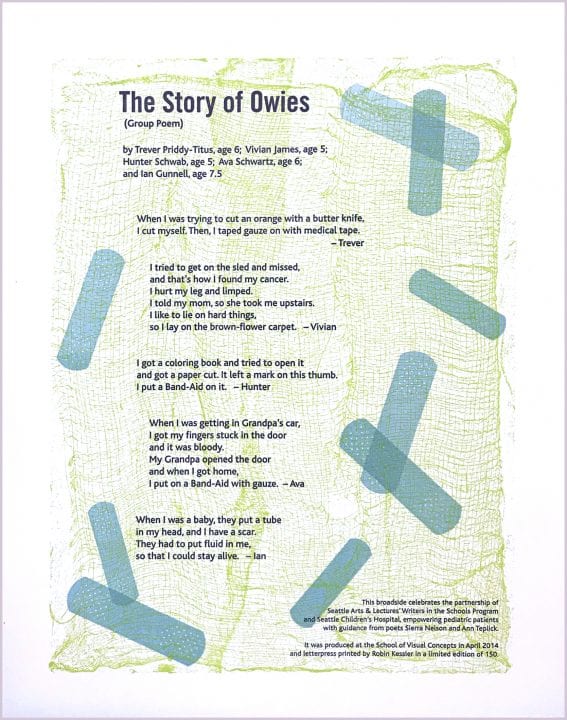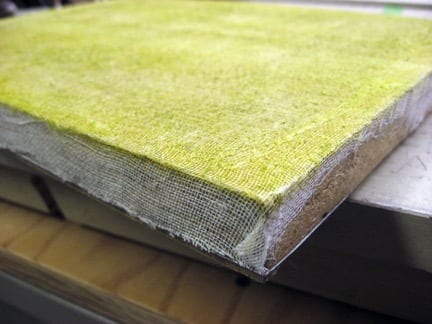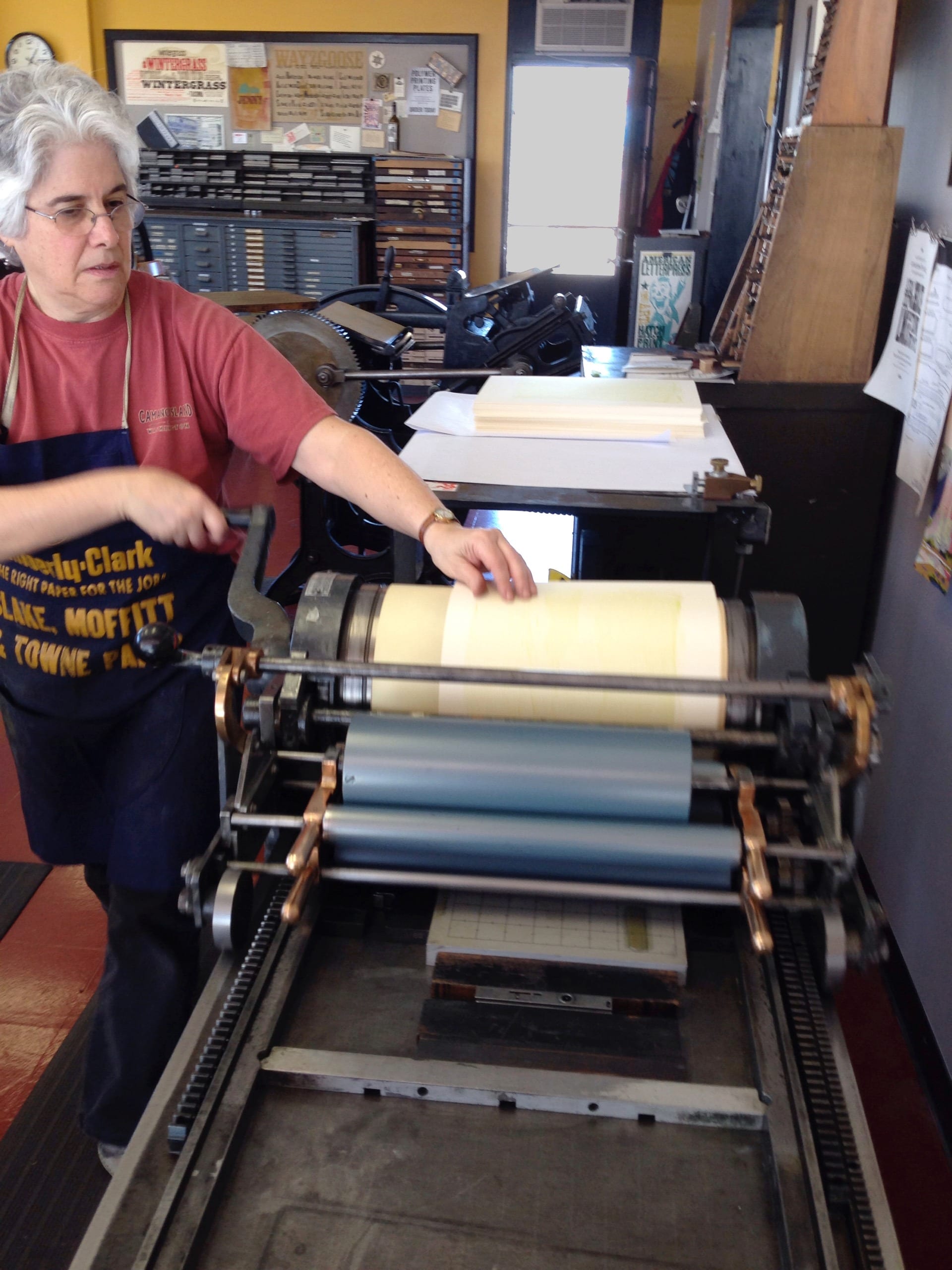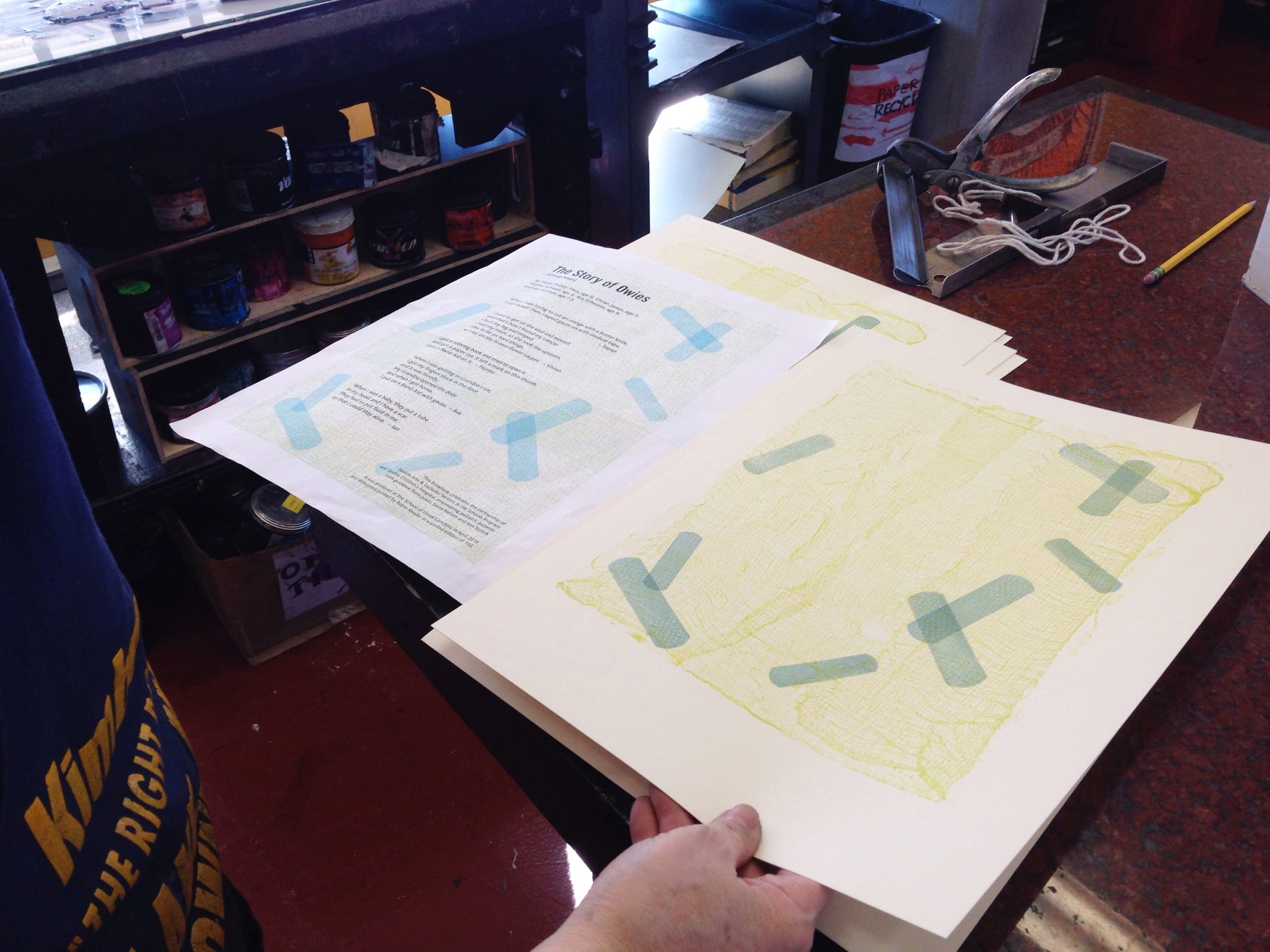
A Decade of Letterpress: Robin Kessler
October 29, 2020
Each year, in a project led by Sierra Nelson and Ann Teplick of Writers in the Schools, and the School of Visual Concepts, long-term patients from Seattle Children’s Hospital and a team of letterpress artists join forces to create an extraordinary collection of handprinted, limited-edition broadsides. These works of arts—which you may have oohed and aahed over at the SAL info table at in-person events or seen at local libraries or galleries as they toured around Seattle—are always colorful, fantastical, and deeply felt.
To celebrate a decade of this letterpress project, we’ve asked artists behind the press to give us an inside look at the process of turning youth poetry into art, in this series of retrospectives on some of their favorite pieces over the years. Below, Robin Kessler talks us through her process, focusing on “The Story of Owies,” a 2014 broadside she created using a group poem by Trevor Priddy-Titus (age 6), Vivian James (age 5), Hunter Schwab (age 5), Ava Schwartz (age 6), and Ian Gunnell (age 7.5).
How many years have you participated in the project?
I’ve participated for 9 of the 10 years. I’ve printed a broadside 6 of those years – the others I’ve worked only on the considerable project of building the portfolios. We spend weeks hand-binding the beautiful enclosures, in group sessions that feel like a quilting bee.

The gauze plate, after printing with green ink (Anne Hilton).
Where did you find your inspiration?
“The Story of Owies” is a group poem by five 5- to 7-year-olds, with several references to gauze and band-aids. I’d recently taken a class at SVC where we experimented with collagraph printing—making printing plates from non-traditional materials—so I was inspired to try that technique. I glued gauze to a piece of plywood for the background texture. I tried using real band-aids for the next print layer but couldn’t get the effect I wanted, so created the “band-aids” on the computer for a photopolymer plate. The text is also on a polymer plate, not hand-set type.

Printing at the old SVC letterpress shop (Anne Hilton).
What’s the process like to turn a poem into a broadside?
First reading and re-reading the poem to get a feeling or image(s) to work with. Sometimes I want more info about the poet; sometimes the imagery is obvious to me. Then sketching layouts and ideas, thinking about fonts and type. For this poem I made a small sample plate with gauze and band-aids and made some rough prints at home to see if my idea would work on press. I also tried some ink combinations, and settled on bright colors for this instead of more realistic bandage colors.

Checking the actual print (on the right) against my computer-generated design (Anne Hilton).
What’s your favorite part of the project as a whole?
The collaboration with the group is the best part for me. Coming together to build the portfolios, and especially our final gathering to show and tell about our prints and printing process. It’s a wonderfully supportive creative community!
Thank you, Robin!
There will be more letterpress artists featured on our blog in the coming months as we celebrate a decade of this project, so stay tuned to this series.